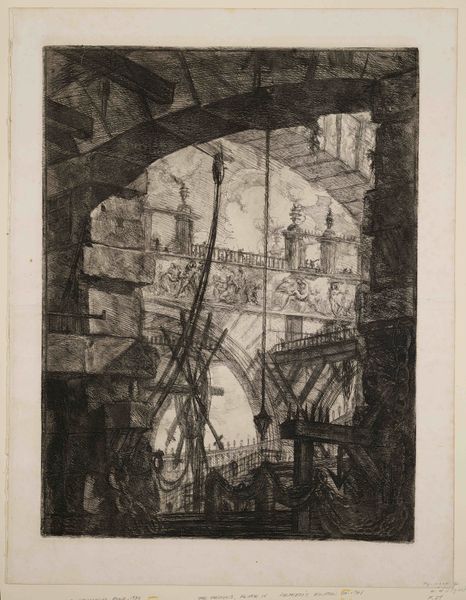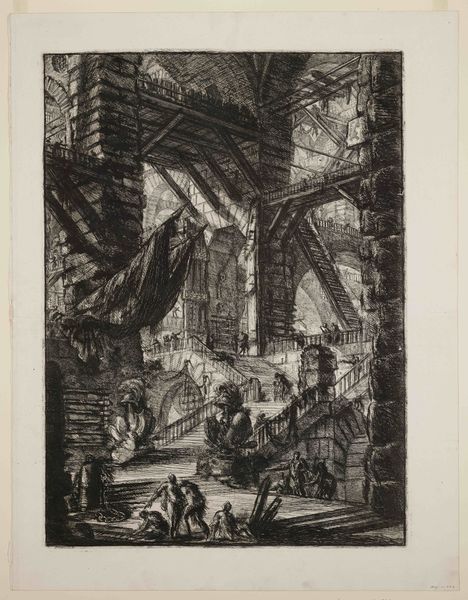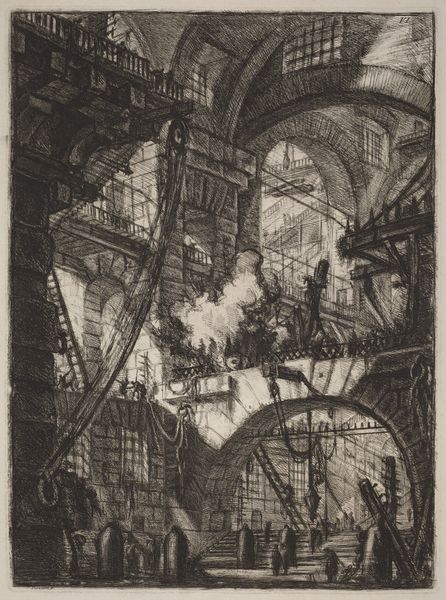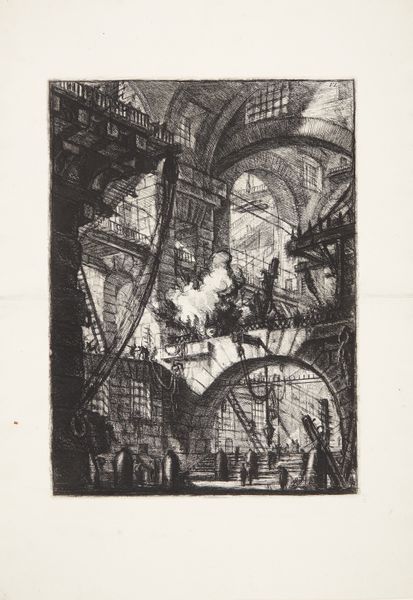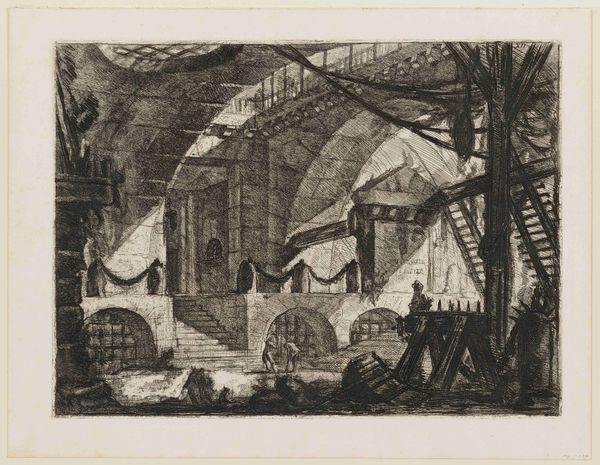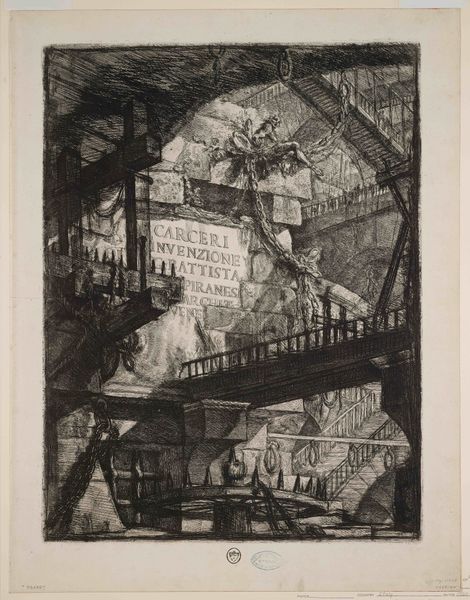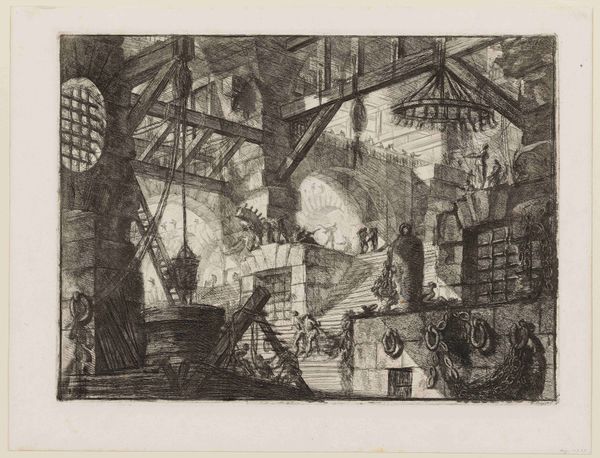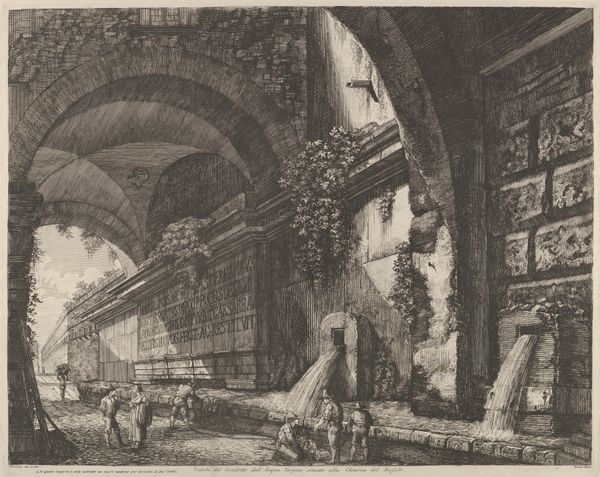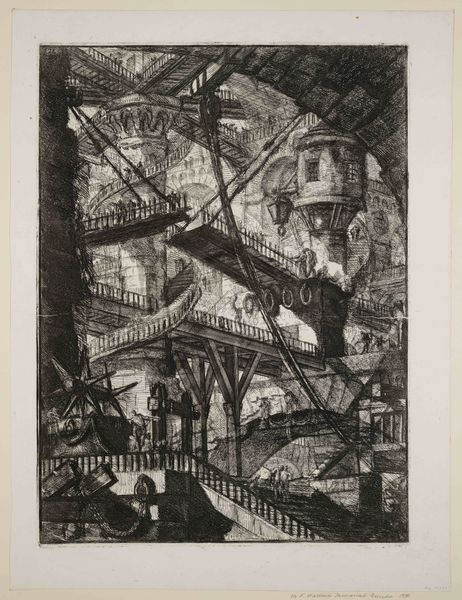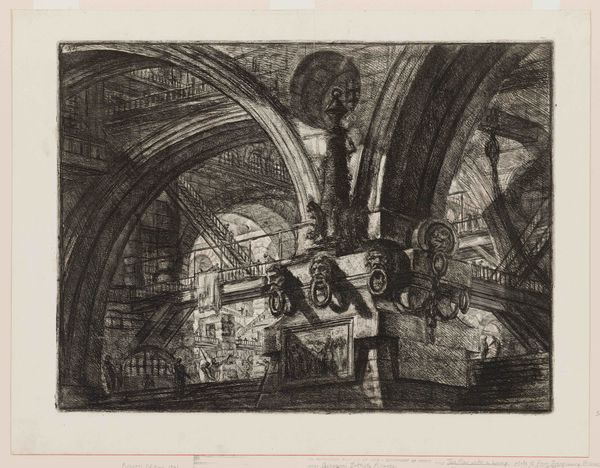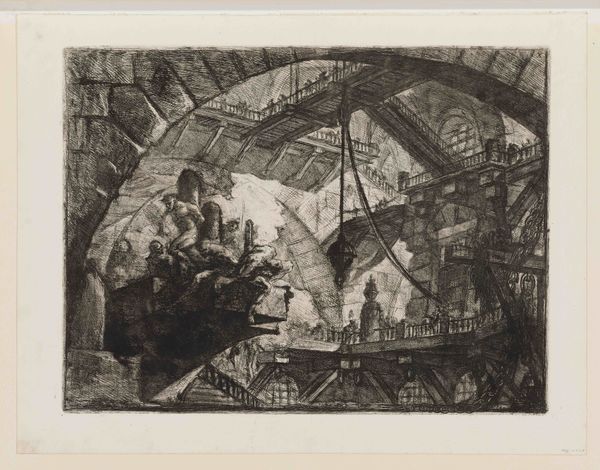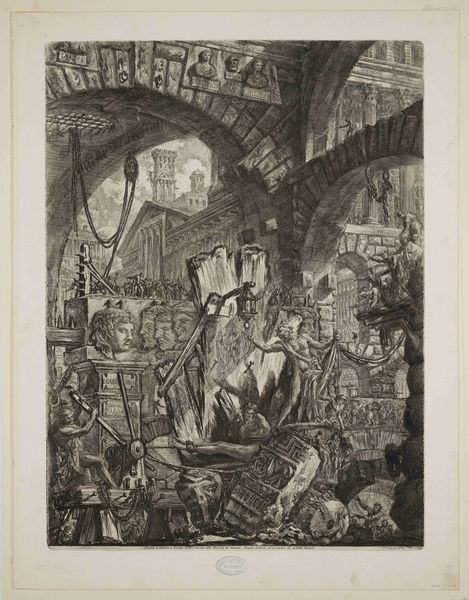
Dimensions: Image Size: 21-1/2 x 15-3/4 in. (54.6 x 40.0 cm)
Copyright: Public Domain
Editor: This is Giovanni Battista Piranesi's etching "The Smoking Fire," from around 1761, currently at the Minneapolis Institute of Art. The intricate details and dramatic contrasts immediately draw me in, creating a palpable sense of depth. How do you approach a print like this from a formalist perspective? Curator: Initially, one must observe how Piranesi manipulates line and shadow to establish space and form. Notice the architectural grandeur defined by the vaulted ceilings and arches. These shapes repeat and intersect, leading the eye deeper into the scene. What structural relationships do you find most compelling? Editor: I'm struck by how the light source, seemingly emanating from the fire itself, dramatically highlights certain areas while leaving others obscured. The interplay between these light and dark areas, combined with all of the straight and curved lines gives the picture this dizzying sensation. It's both beautiful and unsettling. Curator: Precisely. Consider how the lines contribute not just to descriptive form but to the overall atmospheric effect. The hatching and cross-hatching build a sense of texture and weight, while the careful gradation of tone shapes our emotional engagement with the imagined architectural setting. How does this compositional structure support the expressive content? Editor: Well, it makes it all feel very immersive; I feel like I’m in a Piranesi engraving! Thinking about it formally has enhanced my appreciation for Piranesi’s mastery of line and contrast. It's like the formal elements become the content itself. Curator: Indeed, it provides an approach through which to explore how the material and structural choices amplify the expressive possibilities inherent within the etching.
Comments
minneapolisinstituteofart about 2 years ago
⋮
In this view of a prison interior, Giovanni Battista Piranesi explored his imagination through architecture realized only on paper, unfettered by practical considerations. The scene revels in the sublime—the flipside of the Age of Enlightenment—in which Romantics opened themselves to the sensation of forces beyond human comprehension and control. Piranesi intended us to lose ourselves as we wander through his maze of stairways, balconies, and catwalks leading to unknown destinations. This is the scary movie of the 18th century. Perspective of Arches belongs to a suite of such prison scenes. A decade after their first appearance in the late 1740s, Piranesi went back to work on his copper plates, darkening the images both literally and figuratively. It is in no small part due to the radical rethinking evident between the two iterations of the Prisons (see Mia 2010.87) that Piranesi is sometimes called “the Rembrandt of Architecture.” Perspective of Arches is among the most freely drawn plates of the first edition and among the most radically transformed in the second.
Join the conversation
Join millions of artists and users on Artera today and experience the ultimate creative platform.
